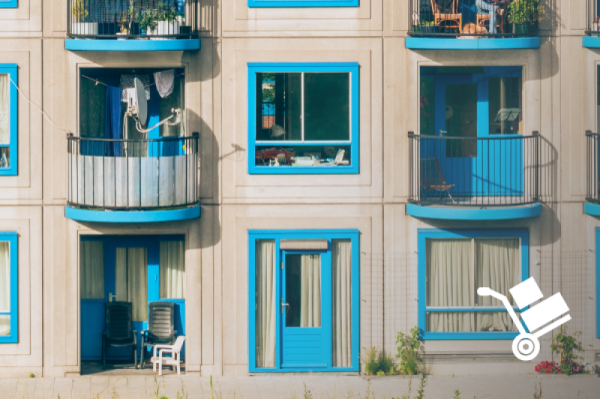A sublease agreement adds a new tenant to a preexisting lease. This typically occurs when someone on the lease is either moving out permanently or for a short period of time before the lease has ended. For a more in-depth look at subletting, check out our subletting guide.
When subletting, put everything in writing
Whether you’re the sublessee or sublessor, make sure to put everything down in writing. This will save you down the road in case you and the other person have a disagreement about things like your rent, damages or security deposits.
What should be included in a sublease (subletting) agreement?
Paying rent while subletting
Your sublease agreement should include the following information about rent:
- Who is responsible for paying rent
- The cost of rent
- Who the rent should be paid to
- When the rent must be paid each month
You’ll need to decide if the sublessee will pay rent to the sublessor who will send the money to the landlord or if the sublessee will pay the landlord directly. We’d recommend paying the landlord to eliminate any confusion. Most of this seems like a no brainer, but it’s important to cover all of your bases in writing in case a disagreement comes up down the line.
For example, let’s say that you are the sublessee. You and your sublessor verbally agree that you will pay your rent to them and they will then send the money to the landlord, but you don’t put this agreement in writing. (It’s best to pay your landlord directly, but this is just an example). Your first month of living in the new house is almost up, and you paid your sublessor the rent for next month. However, your landlord notifies you that they never received your rent from the sublessor. When you contact the sublessor, they claim that they never agreed to pay the landlord for you even though you remember making the verbal agreement.
Because you only discussed it verbally, you have no way to prove that this agreement was made. If you had written out a sublease agreement, you would have proof of your agreement and a binding contract.
Include who is responsible for damages when subletting
Whether it’s a hole in the wall or scratches on the hardwood floor, it’s inevitable that your home will get a little wear and tear. Make sure to include who is responsible for any damages in your written sublease agreement. It’s also a good idea to have a walk through with the sublessor, sublessee and your landlord (if possible) before the new tenant moves in. That way you can make a note of any existing damage so that the new tenant doesn’t get blamed.
Let’s say that you are a sublessor and you’ve just found a sublessee for the remainder of the lease. You both verbally agree that any damage done to the house will be the responsibility of the sublessee. However, when your lease ends and the landlord sends a list of the damages in the house that need to be paid for, the sublessee claims that the damages are your responsibility. Because you didn’t write down your agreement stating that the sublessee is responsible for any damages, you have no proof. This is a common disagreement in subletting situations, so it’s important to include damages in your written agreement.
This section of the sublease agreement should also outline who the security deposit will be paid to. If your landlord is willing, the person moving out should complete a walkthrough of the house before leaving. They should take pictures and write down any damage to keep a record. The landlord can then return the security deposit minus the cost of any damages to the sublessor. After the sublessor receives the security deposit back, the new tenant can give the landlord their security deposit. Any new damage caused by the sublessee will be their responsibility.
If your landlord is not willing to do a walkthrough or return the sublessor’s security deposit before the lease is up, complete a walkthrough with the sublessee and record any damages. The sublessee can then pay the sublessor for the amount of the original security deposit. When the lease ends, the sublessee should receive the security deposit back from the sublessor.
Another option is for the sublessor to wait until the end of the lease to receive their security deposit from the landlord. The only issue with this option is that the person who moved out might be charged for damage done by the sublessee. Whatever you decide to do, make sure that the decision is clearly outlined in the written sublease agreement.
Outline who is responsible for paying utilities when subletting
Again, this seems like a no brainer, but get it in writing anyway. If you’re the sublessor and the utilities are in your name, you’ll want to transfer the utilities to the new tenant. In the sublease contract, make a note that you are no longer responsible for paying utilities and that the new tenant will be responsible.
To transfer your utilities to the new tenant, call each provider a month before you move out. They’ll be able to transfer the service to a new tenant over the phone. Just make sure to have your account information handy and that the sublessee has proof of ID and address ready as well.
Sublease contract template
Subletting laws vary by state, so it’s important to check your state’s rules before making a contract. We’ve created a sublease contract template that provides all of the typical information you’ll want to include. You can easily copy and paste the template below to fill in your details.
Sublease agreement
This sublease agreement is made between the tenant, _______, and subtenant, ______. It will go into effective on _______ and will terminate on ________. The tenant, _______, previously entered into a lease agreement with _______ (Landlord), beginning on ______ (date of the prime lease). The prime lease agreement is attached to this sublease agreement for reference. The tenant would like to sublet the property, located at __________ (the premises), to the subtenant, and the subtenant would like to sublet the property from the tenant.
Term of Sublease
The sublease agreement will begin on _______ and terminate on _______, at which time the subtenant will move out, unless the subtenant and landlord agree to sign another contract extending the lease before the term of this sublease has ended. The agreement may be terminated sooner than the date outlined if any of the terms in this contract are breached. The subtenant is not responsible for securing a replacement tenant when his or her tenancy has ended.
Governing law
This sublease agreement is written in accordance with the laws of the state of _________.
Sublease Rent Payments
In this section of the sublease outline:
- Who will be paying rent
- When it is due each month
- The monthly cost of rent
- Who/where the rent money should be sent
Damages and Security Deposits
This section should explain:
- Who will be paying a security deposit
- Who/where the security deposit should be sent to
- Who will be receiving the deposit back at the end of the lease
- Who will be responsible for any damages done to the house
- The tenant or subtenant (depending on your specific agreement) will be held liable for any damages done to the property, and the landlord has a right to deduct the cost of these damages from the deposit.
- If you plan to have a walkthrough with the landlord, sublessor, and sublessee, list that in this section.
Utilities
All utilities and their payments are the responsibility of the subtenant. Before the start date of the sublease, the original tenant will transfer all utilities to the subtenant.
If any of your utilities are included in rent or paid for by the landlord, list them here as exceptions. You can also refer to the prime lease.
Notice
Any notices regarding this sublease will only be valid if given in writing and forwarded in the mail to the addresses below for each party. These addresses may change as long as the party wishing to change the address notifies all other parties involved in the sublease agreement:
Tenant:
(List tenant’s address here)
Subtenant:
(List subtenant’s address here)
Landlord:
(List landlord’s address here)
Dispute Resolution
The parties of this sublease agreement will attempt to resolve any disputes or conflicts about the agreement among themselves before seeking help from another party. If this is not successful, the parties will seek mediation in accordance with the state’s laws regarding mediation. If mediation is also not successful, all parties may seek resolution through other means available in accordance with the law.
Consent of Landlord
Parties must obtain prior written consent to sublease the property from the landlord, as outlined in the prime lease. A copy of the landlord’s consent is attached to this document.
Incorporation of prime lease
This sublease is written in accordance with and subject to all terms outlined in the prime lease. Any and all obligations of the tenant outlined in the prime lease will be binding for the subtenant. All of the landlord’s obligations in the prime lease must benefit the subtenant just as they did for the original tenant. The provisions outlined in the prime lease will govern the relationship between the subtenant and landlord in full. The only difference will be that the term “tenant” in the prime lease will be replaced by “subtenant” and “lease” replaced by “sublease.”
The subtenant and tenant have agreed to all terms outlined in the sublease contract.
_______________
Subtenant
Date:
________________
Tenant
Date:
Property Inspection
Prior to the start date of the sublease, the subtenant inspected the property and agrees that it is in satisfactory condition, except for the defects listed below:
Satisfactory (y/n) Comments or Defects
Bathrooms | ||
|---|---|---|
Carpets | ||
Ceilings/ceiling fans | ||
Closets | ||
Dishwasher | ||
Disposal/sink area | ||
Doors | ||
Door and window screens | ||
Fireplaces | ||
Lights | ||
Locks | ||
Refrigerator/freezer | ||
Stove | ||
Walls | ||
Windows | ||
Window coverings | ||
Empty rows are for any additional property features not already listed.
___________________
Subtenant
Date:
____________________
Acknowledged by Tenant
Date:
A quick recap: If you plan to sublease your place out or you’re going to sublease a room from someone else, make sure to get a sublease agreement in writing. This will alleviate any disagreements regarding the terms of the sublease, rent, security deposits, damages or utilities.


